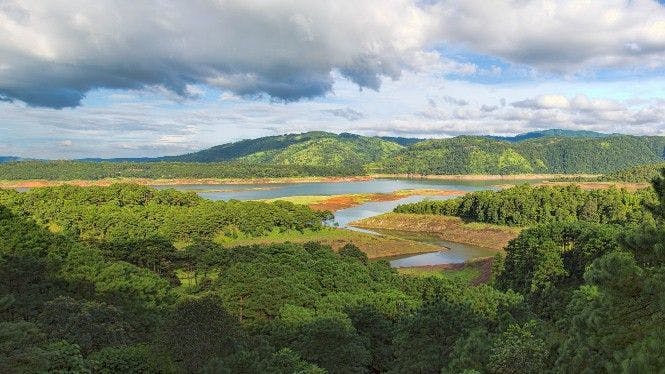When Meghalaya was an Island
BOOKMARK
Do you know that the geological timescale, we live in currently, has been officially named as the ‘Meghalayan Age’? This designation comes after studies of a stalagmite from the Krem Mawmluh cave, in the Khasi Hills in the state, helped geologists’ chance upon a climatic catastrophe - a mega-drought that wiped out most of the bronze age civilizations, including the Harappan Civilization, 4,200 years ago. But the caves of Meghalaya hide a lot more secrets. Take for instance clues to the fact that this region was actually an island about 3.5 billion years ago. It was also once filled with large mangrove forests! The story is fascinating.
One of India’s smallest states, Meghalaya the ‘ abode of clouds’ is not only blessed with the most beautiful vistas - with its mountain ranges, lush green valleys, cascading rivers and famed living root bridges, but it is also a geologist's paradise. Weaving their way under the state’s main hill ranges of East Khasi Hills, South Garo Hills and Jaintia Hills, is a network of about 1700 limestone and sandstone caves stretching over 491 km!
These tell the story of how it all began.
The first breath of life was taken on Earth by the single-celled bacteria 3.8 billion years ago. There were no continents as yet, just a global ocean peppered with small islands. Eventually, meteorite blitz resulted in erosion, sedimentation and volcanic activity which created small proto-continents, growing until they reached roughly their current size 2.5 billion years ago. The continents have since repeatedly collided and been torn apart until 300 million years ago when all land was fused together forming the super continent Pangaea.
In the next 100 million years, the continents of Australia, Africa, Antarctica which were connected to the Indian plate started pulling apart and seas began to invade the empty spaces, where once there had been dry land. As a result, dense tropical forests developed along the margins of the seas. It was during this period that the region we know as Meghalaya was a coral island rising from a tropical ocean swarming with sharks.
About 88 million years ago, the Indian subcontinent broke up from Africa and moved northwards towards Eurasia at breakneck speed. During this time, as landmasses got pushed through tectonic forces, this action disrupted sea flow and also submerged a large part of the grown forests.
In the context of Meghalaya which had coral reefs, limestone was eroded and deposited under water, while rivers from the inland brought sand to the coast, building up sandstones and burying mangrove forests, which through a long process of decaying, transformed into coal beds.
As the seas flooded the landmass, sometimes violently, Meghalaya experienced uplifting and down-thrusting several times, accumulating over the times up to five cycles of nummulitic limestone fossils which alternate with sandstones or laterally pass into each other.
At several stages, certain parts of Meghalaya were uplifted to considerable heights, today known as the Shillong plateau, and the evidence of this can be found in the sedimentary rocks among which the caves take form. Three factors – limestone, heavy rains and elevation – worked in unison here to make the caves in Meghalaya.
Hidden under the undulating hills for centuries, these caves are being noticed today. Besides tourism, excavations and scientific research are conducted to unearth the secrets of our environment.
For example, the recently discovered Krem Puri set a world record at 24.5 km length (almost three times the height of Mount Everest), becoming the longest sandstone cave in the world. Located in Mawsynram (the wettest place of Earth), the name of the cave means ‘fairy cave’ in the local Khasi language and is a complex maze of hundreds of short passages and long corridors. Among the treasure found here are a few shark teeth and some dinosaur fossils – especially of a giant aquatic carnivorous reptile Mosasaurus which populated the sea more than 70 million years ago.
Though most of the caves here do not have evidence of humans living in them, some are believed to have been used as wartime shelters and one, even as a burial ground.
In the environment of Meghalaya, which is nothing less than a geological wonder, a lot remains to be explored, above the ground and thousands of feet below the earth’s crust.
– ABOUT LIVE HISTORY INDIA










